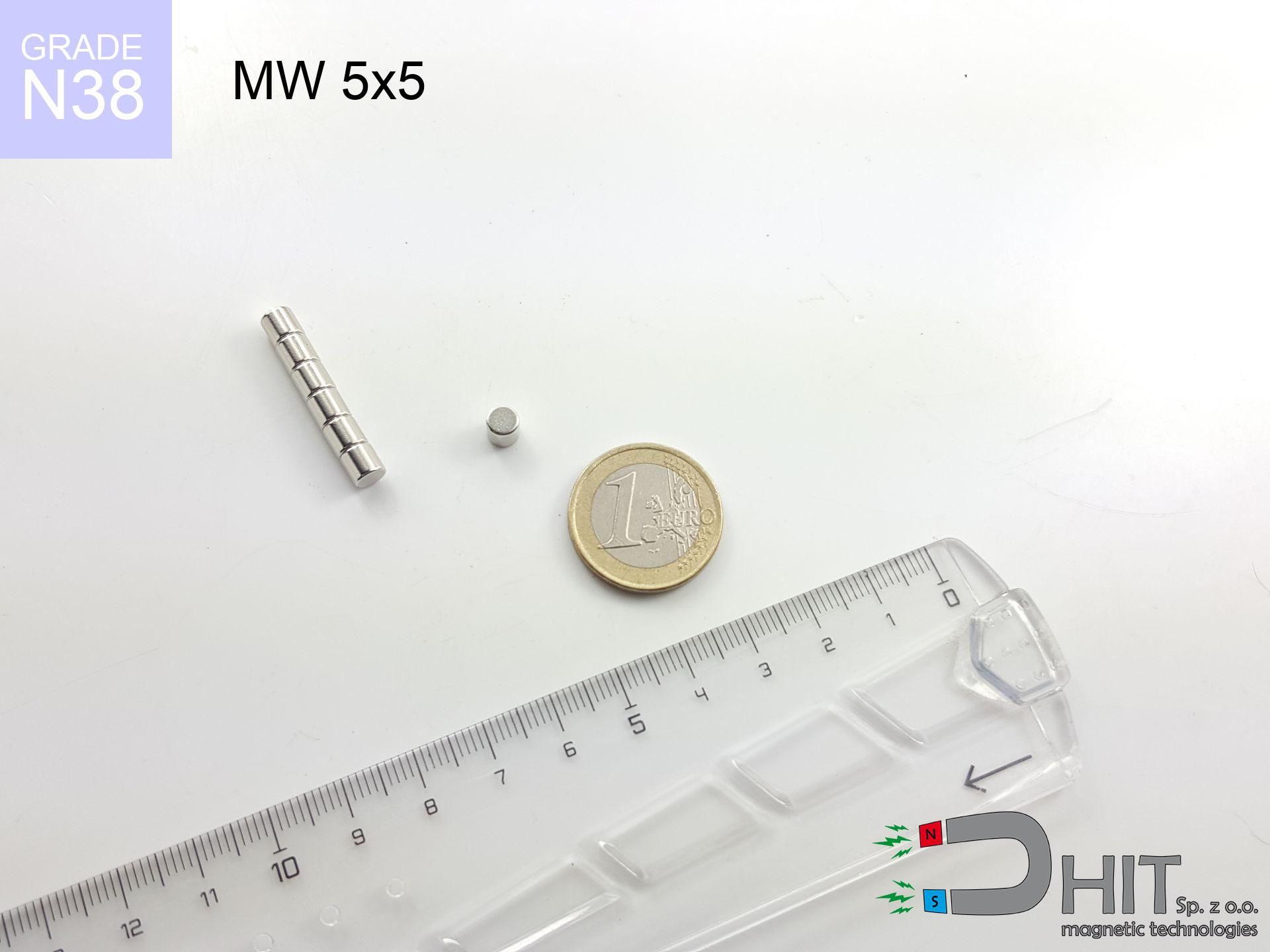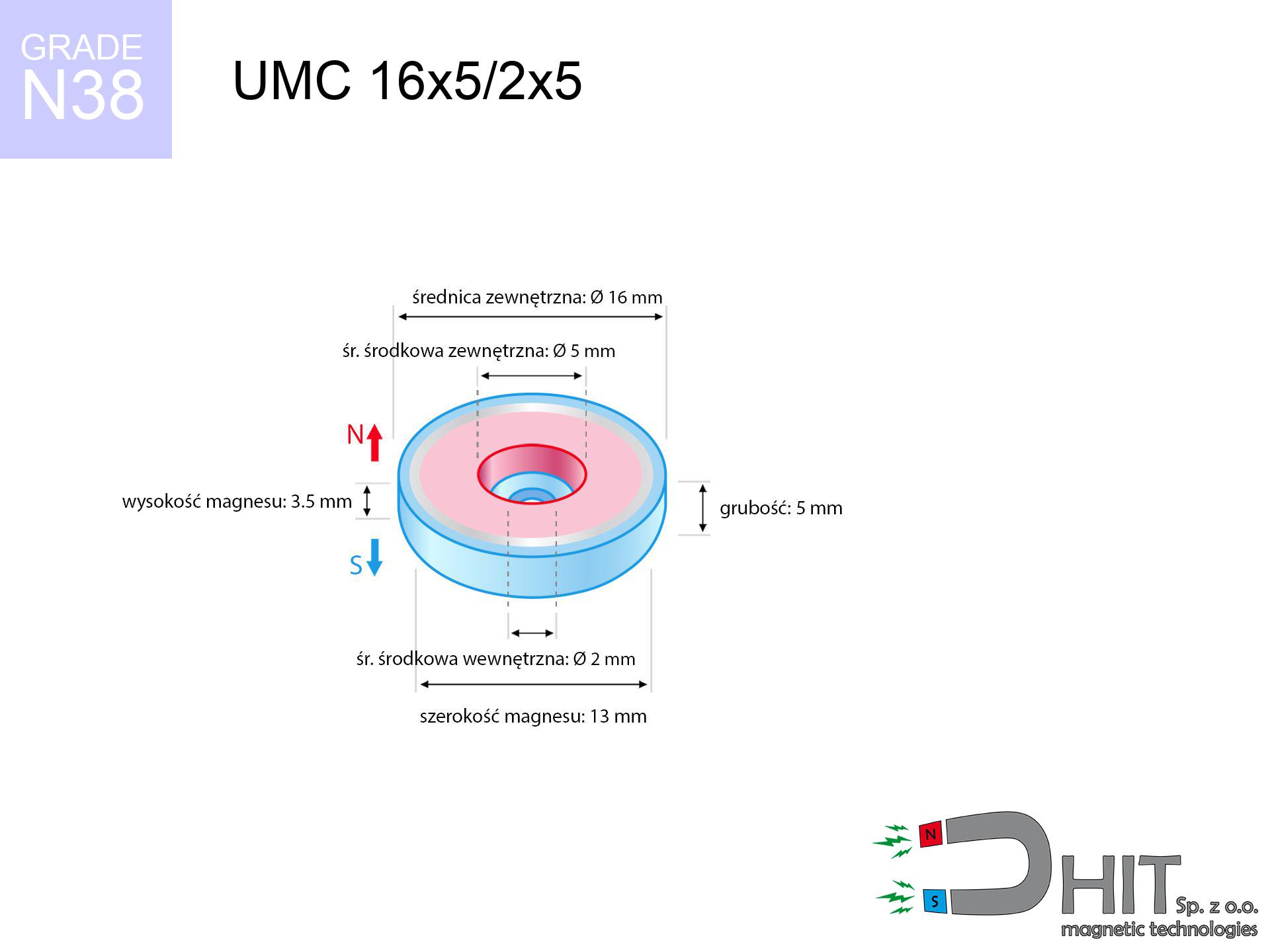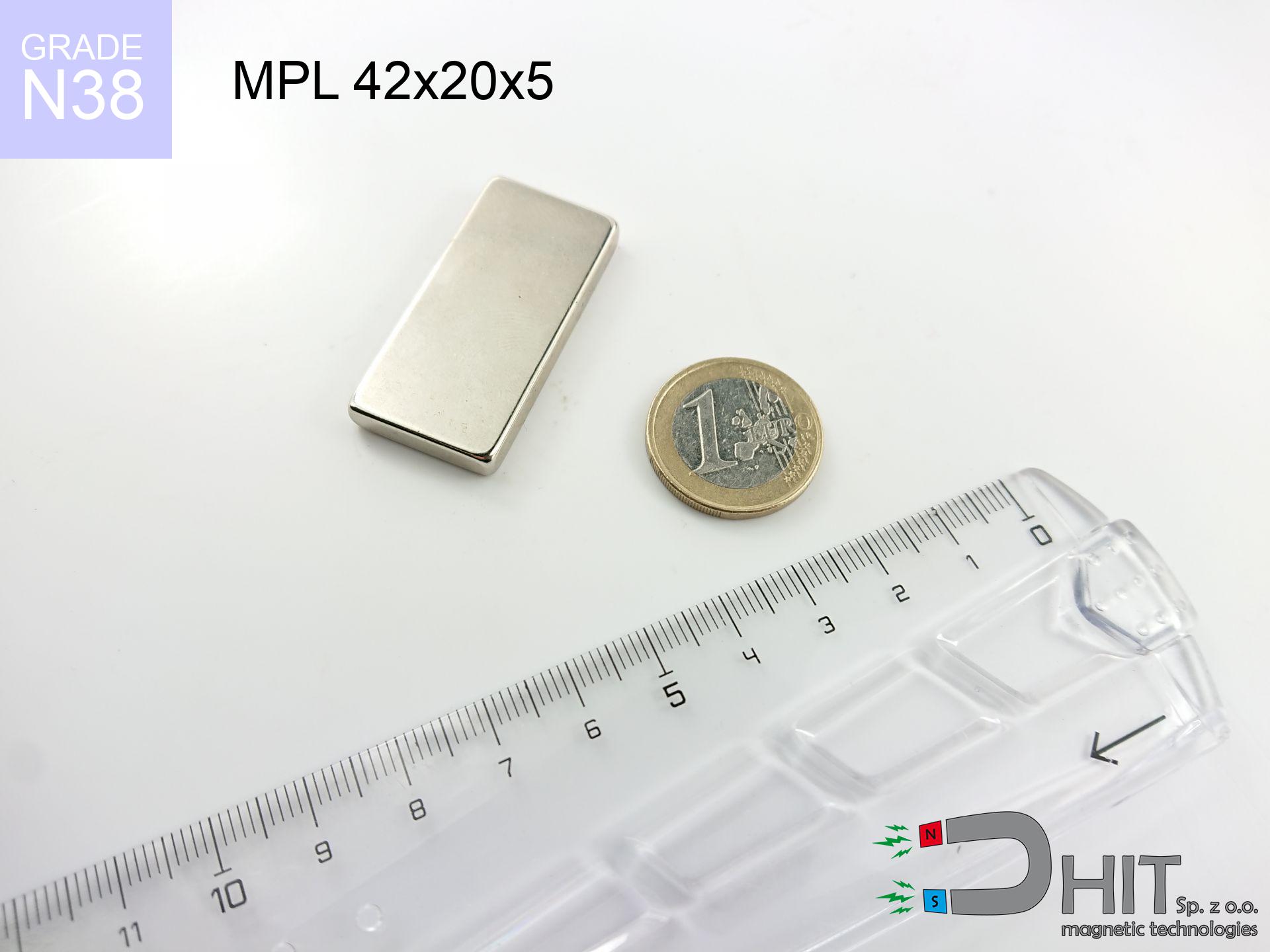MW 5x5 / N38 - cylindrical magnet
cylindrical magnet
Catalog no 010503
GTIN: 5906301814979
Diameter Ø [±0,1 mm]
5 mm
Height [±0,1 mm]
5 mm
Weight
0.74 g
Magnetization Direction
↑ axial
Magnetic Induction
553.14 mT
Coating
[NiCuNi] nickel
0.394 ZŁ with VAT / pcs + price for transport
0.320 ZŁ net + 23% VAT / pcs
bulk discounts:
Need more?Not sure about your choice?
Give us a call
+48 22 499 98 98
otherwise get in touch via
contact form
the contact page.
Force as well as appearance of magnetic components can be reviewed with our
power calculator.
Orders placed before 14:00 will be shipped the same business day.
Magnetic properties of material N38
Physical properties of sintered neodymium magnets Nd2Fe14B at 20°C
Shopping tips
Pros as well as cons of rare earth magnets.
Besides their exceptional strength, neodymium magnets offer the following advantages:
- They have stable power, and over nearly ten years their performance decreases symbolically – ~1% (in testing),
- They have excellent resistance to magnetic field loss as a result of external fields,
- In other words, due to the smooth finish of nickel, the element becomes visually attractive,
- The surface of neodymium magnets generates a powerful magnetic field – this is a distinguishing feature,
- Due to their durability and thermal resistance, neodymium magnets are capable of operate (depending on the form) even at high temperatures reaching 230°C or more...
- Due to the potential of precise shaping and adaptation to individualized solutions, NdFeB magnets can be modeled in a broad palette of geometric configurations, which amplifies use scope,
- Huge importance in high-tech industry – they find application in computer drives, drive modules, medical equipment, as well as other advanced devices.
- Compactness – despite small sizes they provide effective action, making them ideal for precision applications
Problematic aspects of neodymium magnets: weaknesses and usage proposals
- Brittleness is one of their disadvantages. Upon intense impact they can fracture. We advise keeping them in a strong case, which not only protects them against impacts but also increases their durability
- Neodymium magnets decrease their power under the influence of heating. As soon as 80°C is exceeded, many of them start losing their power. Therefore, we recommend our special magnets marked [AH], which maintain durability even at temperatures up to 230°C
- They rust in a humid environment. For use outdoors we advise using waterproof magnets e.g. in rubber, plastic
- Limited possibility of producing nuts in the magnet and complex forms - recommended is cover - magnet mounting.
- Potential hazard related to microscopic parts of magnets can be dangerous, when accidentally swallowed, which is particularly important in the context of child health protection. Additionally, tiny parts of these devices are able to disrupt the diagnostic process medical when they are in the body.
- Higher cost of purchase is a significant factor to consider compared to ceramic magnets, especially in budget applications
Maximum holding power of the magnet – what it depends on?
Holding force of 0 kg is a theoretical maximum value conducted under standard conditions:
- on a block made of structural steel, perfectly concentrating the magnetic field
- with a cross-section no less than 10 mm
- characterized by even structure
- with zero gap (without paint)
- during pulling in a direction perpendicular to the mounting surface
- at standard ambient temperature
Determinants of practical lifting force of a magnet
In real-world applications, the real power is determined by a number of factors, presented from the most important:
- Air gap (betwixt the magnet and the plate), because even a tiny clearance (e.g. 0.5 mm) leads to a reduction in force by up to 50% (this also applies to varnish, rust or debris).
- Force direction – note that the magnet holds strongest perpendicularly. Under shear forces, the capacity drops significantly, often to levels of 20-30% of the maximum value.
- Base massiveness – insufficiently thick sheet does not accept the full field, causing part of the flux to be escaped into the air.
- Chemical composition of the base – low-carbon steel gives the best results. Alloy steels reduce magnetic properties and holding force.
- Smoothness – full contact is possible only on smooth steel. Any scratches and bumps create air cushions, weakening the magnet.
- Temperature influence – hot environment reduces magnetic field. Too high temperature can permanently damage the magnet.
* Lifting capacity was assessed by applying a polished steel plate of suitable thickness (min. 20 mm), under vertically applied force, whereas under parallel forces the load capacity is reduced by as much as fivefold. In addition, even a small distance {between} the magnet’s surface and the plate decreases the lifting capacity.
Precautions when working with NdFeB magnets
Do not underestimate power
Handle with care. Neodymium magnets attract from a long distance and snap with huge force, often quicker than you can move away.
Pacemakers
Health Alert: Strong magnets can turn off pacemakers and defibrillators. Do not approach if you have medical devices.
Data carriers
Do not bring magnets close to a purse, laptop, or TV. The magnetic field can destroy these devices and erase data from cards.
Demagnetization risk
Avoid heat. NdFeB magnets are sensitive to heat. If you require resistance above 80°C, inquire about HT versions (H, SH, UH).
Eye protection
Beware of splinters. Magnets can explode upon violent connection, ejecting shards into the air. Wear goggles.
Machining danger
Combustion risk: Neodymium dust is explosive. Do not process magnets in home conditions as this may cause fire.
Physical harm
Mind your fingers. Two powerful magnets will join immediately with a force of massive weight, destroying anything in their path. Be careful!
GPS and phone interference
Navigation devices and smartphones are extremely susceptible to magnetic fields. Direct contact with a strong magnet can permanently damage the sensors in your phone.
Avoid contact if allergic
Allergy Notice: The Ni-Cu-Ni coating contains nickel. If an allergic reaction happens, cease handling magnets and wear gloves.
Choking Hazard
NdFeB magnets are not intended for children. Swallowing a few magnets can lead to them attracting across intestines, which constitutes a severe health hazard and requires immediate surgery.
Security!
More info about risks in the article: Magnet Safety Guide.



![BM 380x180x70 [4x M8] - magnetic beam BM 380x180x70 [4x M8] - magnetic beam](https://cdn3.dhit.pl/graphics/products/bm-380x180x70-4x-m8-wex.jpg)




